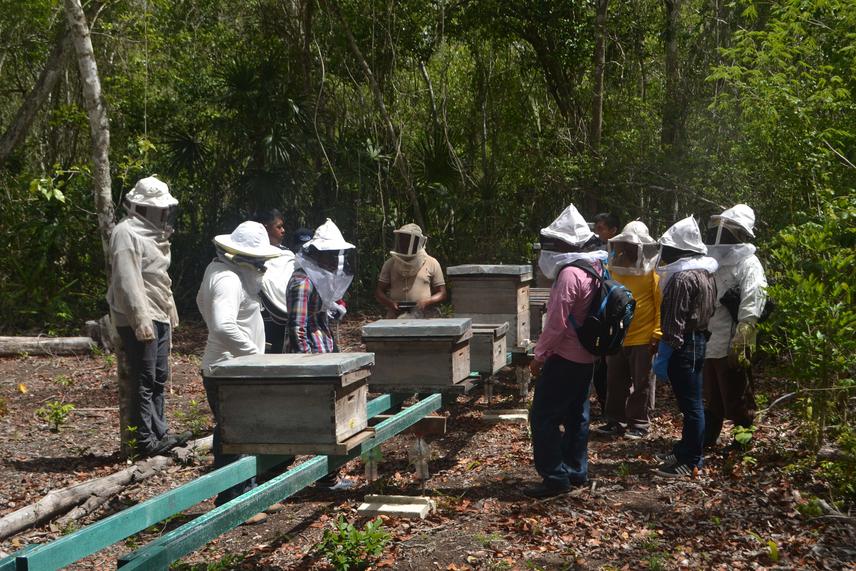Cristina Argudin Violante
Other projects
27 May 2020
Transformative Change in the Calakmul Biosphere Reserve: The Honeybee and the Jaguar as Means and Measure for Sustainable Livelihoods
The Calakmul Biosphere Reserve (CBR) contains some of the highest plant and animal biodiversity in Mexico, yet it supports highly deprived rural communities. This project aims to facilitate a route out of indigence that helps to protect the natural richness of the CBR. This will be done by evaluating the economic and environmental costs and benefits of livestock ranching and organic honey production. I will work with livestock owners to facilitate informed choices about alternative uses of land, based on immediate and longer-term benefits to their income and ecosystem functioning in their community. The project will build the capacities of ranchers who are willing to consider converting to honey production. It will raise awareness of honey production as a livelihood option that reduces reliance on livestock and enhances sustainable exploitation of forest products, contributing to the long-term wellbeing of the rural communities and the sustainability of the CBR.

The Calakmul Biosphere Reserve (CBR) encompasses the largest region of intact tropical forests outside the Amazon. Fifty-two rural communities totalling 29,000 inhabitants live in the buffer zone of the CBR, where they depend on natural resources provided by these forests. Agriculture is the primary source of income, traditionally from family-scale swidden cropping for maize, beans and yucca. Over the last 10 years, unpredictable rainfall patterns, droughts and failing crops have pushed these communities to accept governmental incentives for livestock farming. The shift in land use pattern from arable to ranching has profound consequences for local ecologies and socio-economies.
To mitigate further forest cover loss and rural communities’ deprivation, this project aims to facilitate a route out of indigence that helps to protect the natural richness of the CBR. The project will be developed in two different phases. The first phase will focus on evaluating the cost and benefits of livestock ranching and honey production in the CBR. I will interview recently established livestock ranchers of rural communities near the core zone, to compute a cost-benefit analysis of ranching activities. Results of the interviews will be shared with the ranchers during participatory workshops. Focus groups and role-play exercises will allow participants to reflect on their current livelihood and on alternative futures.
During the second phase of the project, participants from the rancher communities will be invited to a community in the CBR where organic honey production represents the main livelihood. This phase will focus on capacity building. During a workshop, experienced honey producers will instruct ranchers in the set-up, management and engagement of honey production enterprises. In addition, they will share their views, experiences and lessons learnt in the environmental and the economic benefits of this activity. Ranchers will receive first-hand information about honey production from experts who live in the same region. It is important that ranchers learn from the producers themselves as a way to build trust in both the people and process.